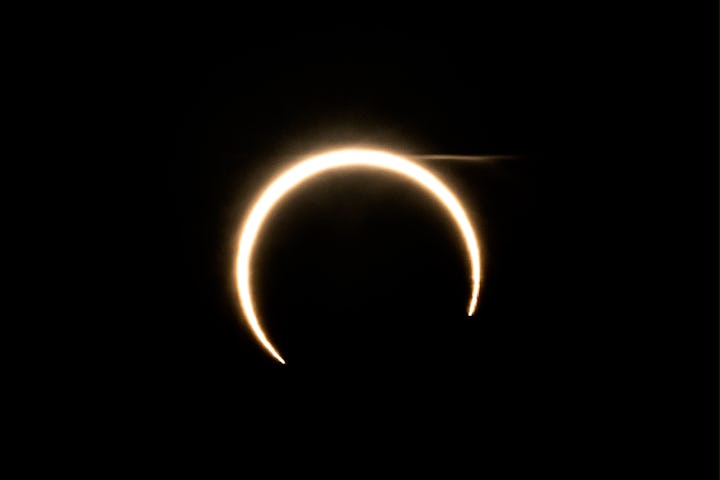This Month's Rare, Total Solar Hybrid Eclipse Will Be A Spectacle
Here's how to view it — no matter where you are.

If you’ve ever seen a solar eclipse, you already know how amazing they are. Now, one of these stunning celestial events is just around the corner — but there’s a catch for North American amateur stargazers. That doesn’t mean that you won’t be able to witness the eclipse at all, however.
There’s a solar eclipse coming in April 2023.
According to EarthSky.com, on April 20, 2023, there will be a full solar eclipse, where the Moon will cross the face of the Sun. These celestial events are incredible to see (safely, with the proper gear and eye coverings) because the Moon blocks the Sun, turning the sky dark with only a ring of red where you can see the outline of the Sun behind the Moon.
Unfortunately, North Americans won’t be able to see this solar eclipse in the sky in person, because it’s only going to sweep through Southeast Asia and Australia. More specifically, a small portion of Australia, plus East Timor and Indonesia, will see a total solar eclipse while the rest of Australia, and “a big portion of Southeast Asia will see a partial solar eclipse, where the moon covers some, but not all, of the sun,” EarthSky.com writes.
However, even though you won’t be able to see it live, you can watch the event online.
TimeandTable.com will have a live stream of the sweeping solar eclipse. The stream will go live on April 19, 2023, at 9:30 PM EST.
Plus — all is not lost on seeing one near you, because there is another solar eclipse coming next year.
There’s another solar eclipse coming in April 2024.
Although most of us won’t be able to see the total solar eclipse this month, there is a big one coming next year around the same time.
According to EarthSky.com, another solar eclipse is coming on April 8, 2024, and if you live in the United States, you will be able to see this one. “The eclipse path will sweep across North America, Mexico, and eastern Canada. A partial solar eclipse will be visible over North and Central America.”
You’re not going to want to miss this one because there’s a considerable time gap between this one and the next solar eclipse that will be visible from the United States. The next solar eclipse won’t be able to be seen from the contiguous United States until 2044. Really.
Of course, with a solar eclipse, safety is the biggest concern — it’s never safe to look directly at a solar eclipse, which can damage your eyes, leading to blindness and eye damage.
For more information on how to safely view solar eclipses, visit PreventBlindness.org or the American Astronomical Society.
This article was originally published on